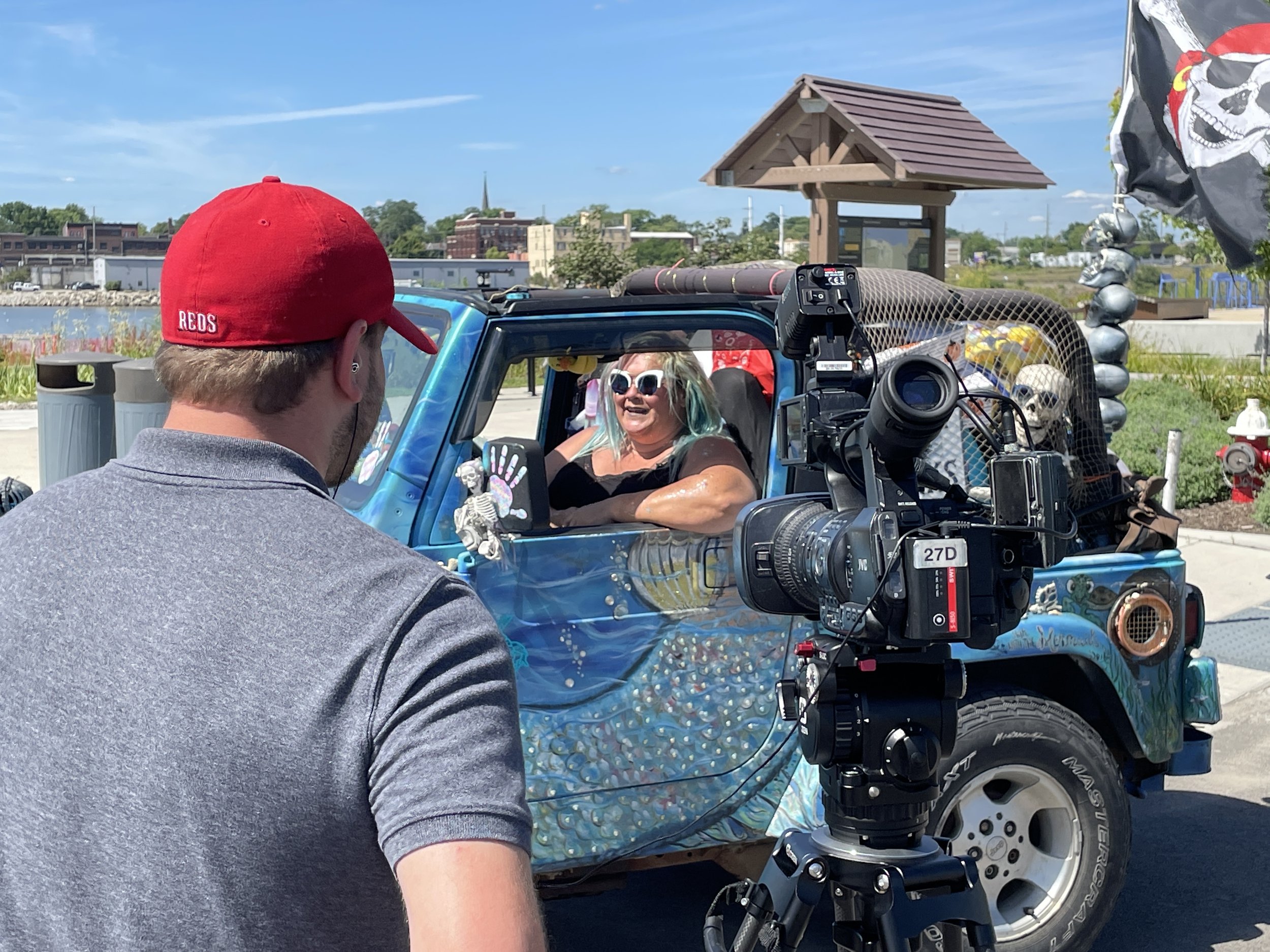Experiential Marketing: A Case Study
Coming into the pandemic, experiential marketing and event marketing were two of the hottest terms in marketing and communications. Based on search data, they took an unsurprising dip during the pandemic….and now we see it beginning to trend up.
My prediction is that you will see experiential marketing rejoin its place in strategic plans and budgets because of the way people live and use media today.
I had the opportunity to think about this last month when I was privileged to be able to work with Thread Marketing on the annual Jeep Fest event in Toledo.
The Michigan Mermaid and her Jeep
For those who are not in the region, this was the 5th Toledo Jeep Fest event—a community celebration of Jeeps and the Jeep lifestyle. We started it when I worked at Thread, and the first year there was pouring rain and 40,000 people showed up in Downtown Toledo. We thought we might be on to something.
Obligatory note: The Jeep was invented in Toledo and in this community you are two degrees of separation from someone who worked at the plant.
The event has continued to grow and I have continued to be involved even after leaving Thread. We won a 2019 Silver Anvil for our work on this project.
So, while I was working with the media to tell the story of the 70,000 people who came to the event, I had some insights on the currency of event and experience marketing.
Today’s Media Landscape Makes Experiential Marketing Increasing Important
You don’t need to see the stats. Media usage has continued to become more diffuse. It is harder and harder to find people with traditional marketing and advertising. This has led to the chasing of people online in digital spaces, but even that seems to be softening in the face of huge engagement numbers that seem incongruous with the effect on the bottom line.
It seems to me that this is the time for events and also out-of-home. As always, creativity rules the realm.
Experiential Marketing Does More than Advertising
One of the Jeepers I talked to told me that when he had his Jeep, he had friends no matter where he was—and that would generally be off-road in the middle of nowhere.
Toledo Jeep Fest does many things well, but building a sense of community is right at the top. Jeepers connect with each other at the event and build relationships that actually strengthen loyalty to the brand, because the brand is what brought them together.
Also, retirees from the plant use it as a kind of homecoming.
And because people are participants in the event, they are more likely to internalize the positive emotions the brand is meant to communicate.
This is important for our times because I sense we are mourning a loss of connectedness with our community. A preacher friend of mine says we chase “the idolatry of self-sufficiency.” Participatory events can help us feel togetherness when we need it.
Events Work Up and Down the Funnel
Sorry to turn into marketingdork on you by talking about the funnel. Here’s the thing. I think people have a tendency to think that events are only for the true believers, down in the cozy and narrow part of the funnel.
That’s selling the tactic short. Because there are curious people at Toledo Jeep Fest, attending for the excitement or the parade or the kidszone. And where there is curiosity, there is an opportunity to build awareness.
Not awareness of the existence of the brand. Virtually everyone has heard of Jeep. Rather, it’s about awareness of the energy in the brand, which had to be a revelation to the curious. It was to me.
Actual Commerce is Done
It would be a mistake to talk about Toledo Jeep Fest (or any event) as strictly for brand building. This event has actual commercial value—like cash changing hands. The aftermarket is a huge BTC business and vendors at Toledo Jeep Fest interact with enthusiasts and move products in a way that thrills both of them. Vendors have told Thread that it is the best event they attend each year.
Conclusion
Look, events are costly and they are time-consuming. And stressful. They’ll always be part of the meal, not the whole meal. But in today’s world, they represent a unique and increasingly important way of ensuring we stay connected in meaningful ways with our customers and stakeholders.


